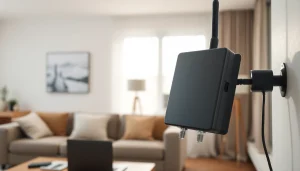
Understanding Furniture Hardware Suppliers
In the world of furniture production and design, the role of furniture hardware suppliers cannot be overstated. These suppliers provide the essential components that enable the creation and assembly of both functional and aesthetic furniture. From hinges and drawer slides to knobs and pulls, the hardware these suppliers offer forms the backbone of furniture construction. This article will deeply delve into what you can expect from furniture hardware suppliers, evaluate their offerings, and provide insights on how to choose the right ones for your projects.
What They Offer: Types of Hardware
Furniture hardware encompasses a broad range of components, each serving critical functions in both form and function. Understanding these types can significantly impact the overall quality and design of your furniture.
- Drawer Slides: Essential for the smooth operation of drawers, these slides come in various types, including side-mounted, under-mounted, and center-mounted.
- Hinges: Vital for doors and cabinets, hinges vary in design and material, catering to different aesthetic preferences and weight requirements.
- Knobs and Pulls: These decorative elements play both functional and aesthetic roles, available in numerous styles, materials, and finishes to enhance furniture design.
- Drawer Catches: These small components secure drawers and doors, ensuring they remain closed when not in use.
- Legs and Feet: Furniture legs, whether fixed or adjustable, are crucial for both stability and design interest.
- Table Hardware: Includes everything from leg braces to corner brackets, ensuring the table’s structural integrity.
Key Suppliers in the Industry
Identifying reliable suppliers is crucial for maintaining the quality and efficiency of your furniture production. Here are some notable players in the furniture hardware industry:
- Rockler: Known for a vast selection of cabinet and furniture hardware, Rockler is a go-to for intricate project hardware.
- Woodcraft: Offers an impressive range of hardware options, from vintage to modern styles, catering to diverse customer needs.
- Richelieu: A leader in specialty hardware, Richelieu is well-recognized within the woodworking community.
- Top Knobs: Specializes in premium cabinet and drawer hardware, offering extensive choices to suit different decors.
- Van Dyke’s Restorers: Offers a varied selection of replacement parts and accessories for vintage furniture repair.
Benefits of Sourcing Locally
While global suppliers may offer competitive pricing, sourcing locally can provide several benefits:
- Quality Assurance: Local suppliers often have a vested interest in maintaining their reputation, usually resulting in higher-quality products.
- Quick Turnaround: Proximity shortens delivery times, enabling faster project completion.
- Personal Relationships: Building a rapport with local suppliers might lead to better customer service and support tailored to your specific needs.
- Supporting Local Economy: Purchasing locally helps bolster the community and can often lead to environmentally sustainable practices.
Evaluating Hardware Quality and Variety
Understanding the quality and variety of the products you source is essential for your project’s success. Here are some ways to make informed assessments.
How to Assess Product Durability
Durability is crucial, especially for hardware that will undergo frequent use. Here are some methods for assessing durability:
- Material Checks: Investigate the materials used in production. Metals like stainless steel or solid brass are often more durable than cheaper alloys.
- Load Tests: Test the hardware under working conditions to ensure it can withstand the expected load.
- User Reviews: Seek out reviews or testimonials from other users to gauge the long-term performance of specific products.
Identifying Unique Designs: A Competitive Edge
In a crowded market, unique hardware designs can set your furniture pieces apart. To identify unique offerings:
- Explore Custom Options: Many suppliers offer customizable hardware. Take advantage of this to create one-of-a-kind designs.
- Follow Design Trends: Keep an eye on design trends and consider incorporating elements like eco-friendly materials or vintage styles.
Supplier Certifications and Standards
Understanding certifications can establish trust in supplier products. Look for:
- ISO Certifications: Indicates that the supplier follows international quality management standards.
- Green Certifications: If sustainability is a priority, check for eco-friendly certifications.
- Industry-Specific Standards: Certain industries may have unique standards that suppliers must meet. Familiarize yourself with these for your sector.
Pricing Strategies for Furniture Hardware
Pricing can significantly impact your project’s budget. Strategies to manage costs effectively include:
Comparative Analysis of Supplier Prices
Conducting a comparative analysis of supplier prices may reveal hidden savings opportunities:
- Gather Quotes: Request quotes from multiple suppliers for the same types and quantities of hardware.
- Observe Online Prices: Utilize online resources like manufacturer websites to check for pricing consistency across platforms.
- Inquiry about Discounts: Inquire if the supplier offers discounts or special pricing for bulk orders or repeat customers.
Negotiation Tips with Hardware Suppliers
Effective negotiation with suppliers isn’t just about getting a lower price; it’s also about establishing a mutually beneficial relationship. Here are some tips:
- Build Relationships: Establish rapport with suppliers to create a collaborative negotiating environment.
- Be Prepared: Understand your needs and the market, so you know what prices are reasonable.
- Emphasize Long-Term Relationships: Suppliers may be more inclined to offer discounts to customers they see as long-term partners.
Understanding Bulk Pricing Benefits
Buying in bulk can lead to significant savings. Here’s how to maximize these benefits:
- Calculate Your Needs: Assess your current and future projects to determine appropriate quantities for bulk purchases.
- Negotiate Bulk Discounts: Many suppliers offer tiered pricing; inquire about available discounts based on order size.
- Consolidate Orders: If working within a community of builders or designers, consider consolidating orders for additional savings.
Working with Furniture Hardware Suppliers
Establishing strong supplier relationships and clear communication can ease the procurement process for furniture hardware.
Best Practices for Establishing Relationships
Building effective relationships with hardware suppliers involves trust and communication. Here are some strategies:
- Consistency: Work with the same suppliers on multiple projects to foster familiarity and trust.
- Timely Payments: Ensure that transactions are conducted promptly to bolster supplier trust and reliability.
- Provide Feedback: Offering constructive feedback can help vendors improve their services and yours, leading to a beneficial cycle.
Communicating Your Needs Effectively
Clear, detailed communication leads to better supplier relationships and smoother transactions. To do this:
- Be Specific: Clearly outline your requirements, including materials, styles, quantities, and timelines.
- Open Channels: Establish reliable methods for ongoing communication, whether through emails, calls, or meetings, depending on the context.
- Check-In Regularly: Regular follow-ups can help clarify any changes or new requirements as they arise.
Feedback Mechanisms for Continuous Improvement
Creating a loop for feedback with suppliers helps enhance performance over time. Consider these strategies:
- Conduct Surveys: Send out surveys after order completion to gather insights on product quality and service.
- Engagement Reviews: After significant projects, hold discussions with suppliers to review outcomes and identify areas for improvement.
- Regular Assessments: Periodically assess supplier performance against criteria like quality, delivery time, and customer service.
Trends in the Furniture Hardware Industry
The furniture hardware industry is continuously evolving. Staying updated with trends enhances competitiveness and creativity in your projects.
Emerging Technologies in Hardware Design
Innovation is a key trend affecting all aspects of hardware production:
- 3D Printing: Some suppliers now utilize 3D printing technology to create custom-designed hardware, reducing lead times and allowing for unique designs.
- Smart Hardware: Technological advancements have given rise to smart hardware solutions that integrate IoT technology, enhancing functionality.
- Sustainable Production Techniques: As the market becomes more environmentally conscious, suppliers are adopting eco-friendly manufacturing processes.
Sustainability Practices Among Suppliers
Sourcing sustainable hardware not only aligns with growing environmental concerns but can also appeal to eco-conscious consumers:
- Recycled Materials: Many suppliers have begun using recycled materials in their hardware products, minimizing environmental impacts.
- Eco-Friendly Finishes: Look for suppliers who offer finishes that are free from toxic chemicals and environmentally safe.
Future Directions in Furniture Hardware
Looking towards the future, several trends and directions are poised to shape the furniture hardware landscape:
- Customization: Increased customer demand for personalization will lead to more suppliers offering customizable hardware options.
- Integration of Technology: Expect more integration of technology with traditional hardware as smart homes continue to rise in popularity.
- Increased Focus on Aesthetics: Design-led hardware solutions will become commonplace, prioritizing visual elements alongside functional aspects.






